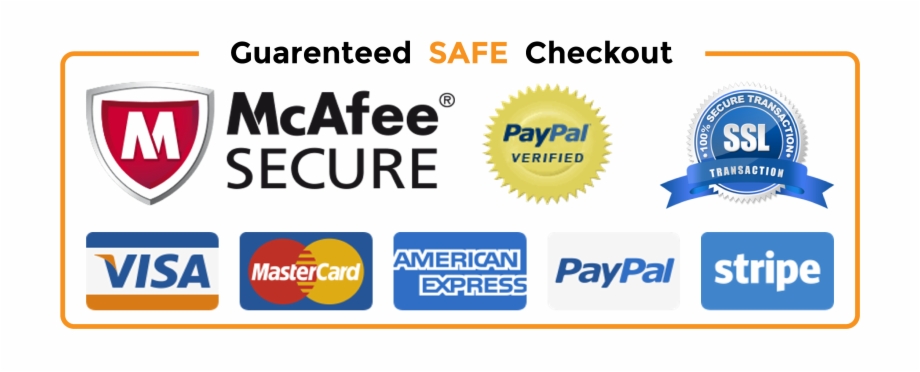
HCIT (Healthcare IT): Segmented by Product, Procedure, Application and End users - Growth, Market Size, Future Prospects & Competitive Analysis, 2020 2028
- Published Date: 2022-12-13
- Report ID: 141746
- Pages: 200
-
Format:

Report Description of the HCIT (Healthcare IT) in US
Research Scope and Assumption
- The report provides the market value for the base year 2020 and a yearly forecast up to 2028 in terms of revenue (USD billion)
- The key industry dynamics, regulatory scenario, reimbursement scenario, major market trends, and drug markets are evaluated to understand their impacts on the demand for the forecast period. The growth rates were estimated using correlation, regression, and time-series analysis
- We have used the combination of top-down and bottom-up approach for market sizing, analyzing key regional markets, dynamics, and trends for various solutions, services, and end uses
- All market estimates and forecasts have been validated through primary interviews with the Key Industry Players (KIPs) and secondary analysis
- Inflation has not been accounted for in order to estimate and forecast the market
- Numbers may not add up due to rounding off
Research Objective:
- To analyze and forecast the market size of US Healthcare IT market
- To classify and forecast US Healthcare IT market based on application, drugs, project type, and application
- To identify drivers and challenges for US Healthcare IT market
- To examine competitive developments such as mergers and acquisitions, agreements, collaborations and partnerships, etc., in US Healthcare IT market
- To conduct pricing analysis for US Healthcare IT market
- To identify and analyze the profile of leading players operating in US Healthcare IT market
Reason to Buy the Report:
- Facilitate decision-making based on strong current and forecast data for HCIT (Healthcare IT) market
- Develop strategies based on the latest regulatory framework
- Strategically analyze micro-markets with respect to individual growth trends, future prospects, and their contribution to the market
- Analyze competitive developments such as expansions, investments, mergers & acquisitions, new product developments, and research & developments in the HCIT (Healthcare IT) market
- Analyze the opportunities in the market for stakeholders and draw a competitive landscape for market leaders
- To strategically profile key players and comprehensively analyze their market shares and core competencies
- We have technically sound team which do a deep dive research and also provide strategy based consulting analysis
HCIT (Healthcare IT) Market Executive Summary
Healthcare information technology is a field of IT that involves the design, creation, development, use, and maintenance of information systems for the healthcare industry. Automatic and interoperable healthcare information systems offer a host of advantages such as low costs, minimal errors, improved medical care and public health, enhanced efficiency, and better patient satisfaction
Market Size and Key Findings
The HCIT (Healthcare IT) market size is at around USD 85 billion in 2020 and is projected to reach USD xx billion by 2028, exhibiting a CAGR of 11.4% during the forecast period
The HCIT (Healthcare IT) in US, will be growing at faster pace of 11.4% during the forecasted period till 2028. Increasing demand for improved patient safety resulted in increased demand for quality healthcare and services continuously developing healthcare IT in US is stimulating the growth of the market
Market Dynamics
Market Growth Drivers Analysis
The US healthcare IT market is driven by growing demand for improved patient safety and patient care and rise in demand for quality healthcare and services. Also, increase in government initiatives to promote healthcare IT acts as a market growth driver. Rising need to curtail the escalating healthcare costs also acts as market driver. Collaboration of key players with local players can also boost the market
Market Restraints
Some of the factors hindering the growth of the market includes huge supply and demand gap with many local as well as international key players operating in this segment. Lack of in-house IT knowledge and reluctance among end users to adopt new methods may restrain the market growth. High costs are incurred for implementation, maintenance and upgrading healthcare IT services might hamper the market growth
COVID-19 impact on "HCIT (Healthcare IT) in US
Due to the COVID-19 outbreak, medical practices of all sizes are under immense pressure, and healthcare facilities across the US have been overwhelmed by the large number of patients visiting them on a daily basis. The rising prevalence of coronavirus disease has driven the demand for accurate diagnosis and treatment in US. In this regard, connected care technologies have proven to be very helpful, as they allow healthcare providers to monitor patients using digitally connected non-invasive devices, such as home blood pressure monitors and pulse oximeters. The COVID-19 pandemic has also increased the need for social distancing among physicians and patients, which has driven the demand for healthcare IT solutions such as remote patient monitoring and telehealth solutions and the need for the accurate and timely exchange of patient health records. In this regard, healthcare IT is an effective tool that provides a framework for exchanging, sharing, and retrieving electronic health information with advanced security
Competitive Landscape
Key Players
The HCIT (Healthcare IT) in US study report will provide valuable insights with an emphasis on the Healthcare IT (HCIT) in US including some of the key market players such as Optum, Cerner, Cognizant Technology solutions, Change Healthcare, Phillips, Epic, Dell EMC, Conduent, Leidos and Allscripts
Our market analysis also entails a section solely dedicated to such major players wherein our analysts provide an insight to the financial statements of all the major players, along with its product benchmarking and revenue analysis. The competitive landscape section also includes key development strategies, market share, and market ranking analysis of the above-mentioned players
Notable Recent Deals
Some Acquisition and Partnership deals are:
1. Telehealth giant Teladocs acquire Livongo. The deal created a digital health behemoth that combines one of the largest telehealth companies with a platform for managing chronic conditions
2. Cone Health and Sentara healthcare merger. The announcement stated that the health systems are looking to combine in order to implement a unique value-based approach that is focused on keeping people healthy and well, while providing high-quality, accessible and affordable health care in more ways and in more place
Healthcare Policies and Regulatory Landscape
Policy changes and Reimbursement scenario
HIPPA Act- The major goal of the Privacy Rule is to ensure that individuals health information is properly protected while allowing the flow of health information needed to provide and promote high quality health care. Also, HITECH Act was created to promote and expand the adoption of health information technology, specifically, the use of electronic health records (EHRs) by healthcare providers. Also, FDA is introducing action plan for artificial intelligence/ machine learning based software as a medical device (SaMD) which will eventually help in Patient-Centered Approach Incorporating Transparency to Users
1. Report Description of the HCIT (Healthcare IT) Market
1.1 Research Scope and Assumption
1.2 Objective of the Study
1.3 Research Methodology
1.4 Reason to buy the report
2. HCIT (Healthcare IT) Market Executive Summary
2.1 HCIT (Healthcare IT) Market - Industry Snapshot & Key Buying Criteria, 2020-2028
2.2 Market Size, Growth Prospects and Key Findings
3. Market Dynamics of HCIT (Healthcare IT) market
3.1 Market Growth Drivers Analysis
3.1.1 Increasing Demand for Improved Patient Safety
3.1.2 Increasing Government Initiatives
3.1.3 Rising Need to Curtail the Escalating Healthcare
3.2 Market Restraints Analysis
3.2.1 Huge Supply and Demand Gap
3.2.2 Lack of In-House IT Knowledge
3.2.3 High Cost of Maintenance
3.3 Covid-19 Market Impact Analysis
4. (HCIT) Healthcare IT in US Market Segmentation..............................
4.1 By Product Analysis:
4.1.1 Healthcare Provider Solutions
4.1.2 Healthcare Analytics
4.1.3 HCIT Outsourcing Services
4.2 By End-users Analysis:
4.2.1 Healthcare Providers
4.2.2 Healthcare Payers
5. HCIT (Healthcare IT) Products Market Share........................
5.1 Market Analysis, Insights and Forecast By Revenue
6. Competitive Landscape...
6.1 Major Top Market Players
6.2 R&D Initiatives in HCIT (Healthcare IT) Market
6.3 Notable recent deals in HCIT (Healthcare IT) Market
6.3.1 Joint Ventures
6.3.2 Partnerships
6.3.3 Mergers & Acquisitions
6.3.4 Strategic divestments
7. Key Company Profiles.
7.1 Optum Company overview
Product & Services, Strategies & Financials
7.2 Cerner Company overview
Product & Services, Strategies & Financials
7.3 Cognizant Technology Solutions Company overview
Product & Services, Strategies & Financials
7.4 Change Healthcare Company overview
Product & Services, Strategies & Financials
7.5 Phillips Company overview
Product & Services, Strategies & Financials
7.6 Epic Company overview
Product & Services, Strategies & Financials
7.7 Dell EMC Company overview
Product & Services, Strategies & Financials
8. Healthcare Policies and Regulatory Landscape
8.1 Policy changes and Reimbursement scenario
8.2 Government Initiatives / Intervention programs
9. Factors Driving Future Growth
9.1 New Trends and Development of HCIT (Healthcare IT) market
9.2 Future Opportunities
10. Strategic Recommendations

Call Us
( India toll free )
+91 835 605 0278
( US toll free )
+1 800 601 6071
Drop us an email at
sales@prudentmarkets.com
Get your pre and post sales queries resolved by our Subject matter experts.
We will assist you to customize the report to fit your research needs.
Our prime focus is to provide qualitative and accurate data.
Feel free to order a sample report before purchase.
Your personal and confidential information is safe and secured.